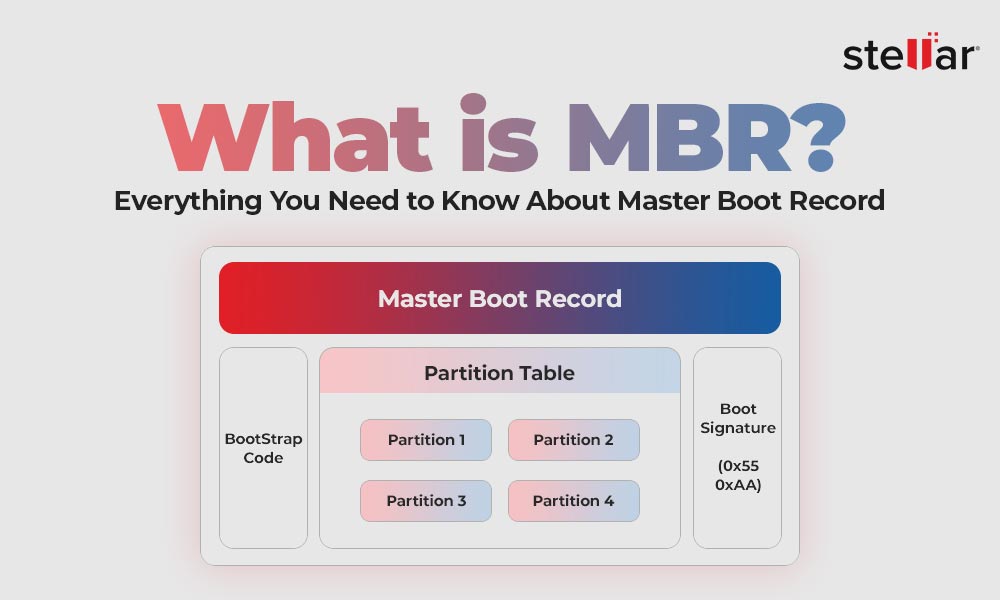Protecting sensitive data from unauthorized access is a critical need today. To safeguard personal information, business collaterals, and proprietary data, many individuals & organizations rely on hard drive encryption.
Data encryption refers to transforming data into a code that unauthorized users can't easily decipher. It is a formidable barrier against unauthorized access, safeguarding data, even during the backup process from prying eyes. The method protects your data stored on the hard drive by locking it with a key or passcode.
In this article, learn how to encrypt your hard drive data using Windows' built-in BitLocker drive encryption feature. We've mentioned encryption methods for both internal (system) and external hard drives. However, before proceeding, let's understand how data encryption works.
What is Data Encryption & Why is it Needed?
Data encryption is a security method that converts readable data (plaintext) into an encoded format. Encryption secures the transmitted data on the computer or cloud by adding a layer of unique codes that remain inaccessible to unauthorized users. The encrypted (unreadable) data is also referred to as ciphertext. It only becomes readable after providing the secret code or decryption key, ensuring data confidentiality.
Encrypting data helps protect your files and sensitive information, thus ensuring safe communication between servers and client apps. Almost every OS we use today has an encryption tool like Microsoft's BitLocker.
Benefits of Data Encryption:
There are many benefits of encrypting your data, including:
- You can encrypt any device, be it a hard drive, USB, or smartphone.
- Even if you lose an encrypted phone, laptop, or hard drive, no one can access data from it
- Encryption prevents data hackers, internet service providers, and advertisement networks from reading your sensitive data.
- Encryption ensures data integrity by preventing data manipulators from deleting or copying files during transfer.
How to Encrypt Hard Drive on Windows?
Encrypt the System Hard Drive
Method 1: Use BitLocker Encryption
You can encrypt the system or internal hard drive with a Windows BitLocker encryption tool that helps protect sensitive information from unwanted access. You can encrypt the hard drive using BitLocker with the following steps:
Note: If you're signed into your system with a user or guest account, sign out and log in again with the administrator account.
- Next, go to the Start menu, right-click, and choose Settings from the given option. You can also press Windows + I to open Settings.
- In System Settings, locate Privacy and open it.

- Afterward, select the Device encryption option. You can also try accessing Update & Security in System Settings and check if the Device encryption option appears.
If you find it, turn it On. If it doesn't appear, it's not available. Here, you'd need to use standard BitLocker encryption. To turn on the standard BitLocker encryption, follow the given steps:
- Open the Control Panel from Search and then go to BitLocker Drive Encryption.

- On the following prompt, click Turn on BitLocker.

- The process of hard drive encryption will start. Now, select Enter a PIN (recommended).

- Enter a PIN 6-20 numbers long twice; then click Set PIN.

- Keep this PIN safe; it will let you access your password-protected hard drive when required.
|
What if I accidentally format my BitLocker encrypted hard drive? Even if you formatted your encrypted hard drive, you can still recover data from formatted drives using a dedicated data recovery software. Enter your BitLocker Recovery Key, and the software will efficiently restore data from the formatted hard drive. |
Encrypt External Hard Drive
You can encrypt external hard drives using Windows' built-in BitLocker To Go utility or a third-party encryption tool. Follow the steps given for each method carefully.
Method 2: Use BitLocker to Go
You can opt for BitLocker To Go to encrypt external hard drives on a Windows system, such as HDDs, SSDs, USB flash drives, or SD cards. It also supports storage media formatted with NTFS, FAT16, FAT32, or exFAT file systems. Follow the below steps for external drive encryption:
- Open the Control Panel from Windows Search. Alternatively, open the Run dialog box, type Control, and hit Enter to access the Control Panel.
- Double-click on the System and Security options from the available ones.

- Afterward, click Manage BitLocker, which is given under BitLocker Drive Encryption.

- Select the external hard drive under Removable data drives – BitLocker To Go.
- When you click on the external hard drive, you'll see the Turn on BitLocker option; click on it.

- In the following window, choose a PIN or password to lock the drive. Next, enter a secure password twice.

- You can choose how to back up your recovery key from the options, like saving it to a file or printing it out to a secure location.

- Select how much of your hard drive you want to encrypt. Since BitLocker automatically encrypts new data you add to the drive, we recommend using the Encrypt used disk space only option.

- If you want to Encrypt the entire drive, and using Windows 10 (Version 1511) or a higher version, select the encryption mode and choose the New encryption mode. Else, select Compatible mode.
- Finally, click Start encrypting and then close the window.

- External hard drive encryption will be successful.
Conclusion:
Data encryption is not merely a technical necessity but a vital measure to protect your data against data theft, identity theft, data breach, and other such attacks. By enabling BitLocker encryption, individuals and businesses can ensure the integrity and confidentiality of their data assets.
Moreover, data loss is inevitable. So, if you accidentally lose your data from a BitLocker encrypted hard drive, you don't need to worry. Use Stellar Data Recovery for Windows, provide your BitLocker encryption key, and recover data lost due to deletion, drive formatting, and corruption.













 5 min read
5 min read-1505.jpg)





